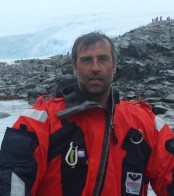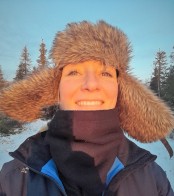Manuel Dall´Osto, PhD, Spanish National Research Council (CSIC), Spain Dr. Manuel Dall´Osto is a scientist at the Institute of Marine Science (ICM) of the Spanish National Research Council (CSIC). His current research is focused on ocean-atmosphere interactions, in particular the multidisciplinary application of polar atmospheric science, marine biogeochemistry and microbial ecology techniques to examine the potential of changing environments on marine aerosol emissions (focusing in particular on polar regions) strongly regulating our changing climate.
Dr. Manuel Dall´Osto is a scientist at the Institute of Marine Science (ICM) of the Spanish National Research Council (CSIC). His current research is focused on ocean-atmosphere interactions, in particular the multidisciplinary application of polar atmospheric science, marine biogeochemistry and microbial ecology techniques to examine the potential of changing environments on marine aerosol emissions (focusing in particular on polar regions) strongly regulating our changing climate.
Eija Asmi, PhD, Finnish Meteorological Institute (FMI), Finland Dr. Eija Asmi is a senior scientist and a head of group “Aerosols and Climate” at the Finnish Meteorological Institute (FMI). She has >20 years of research experience during which she has published about 100 peer-reviewed publications focusing on experimental aerosol research. Her current research interests are aerosols and their sources at polar regions, and climate impacts of those aerosols on snow- and ice-covered areas via clouds, surface albedo and snow- and ice-processes, aiming at improved process-level understanding on atmosphere-cryosphere interactions. She is particularly interested in the light-absorbing components of the aerosol and does research at both polar regions, and the glaciers.
Dr. Eija Asmi is a senior scientist and a head of group “Aerosols and Climate” at the Finnish Meteorological Institute (FMI). She has >20 years of research experience during which she has published about 100 peer-reviewed publications focusing on experimental aerosol research. Her current research interests are aerosols and their sources at polar regions, and climate impacts of those aerosols on snow- and ice-covered areas via clouds, surface albedo and snow- and ice-processes, aiming at improved process-level understanding on atmosphere-cryosphere interactions. She is particularly interested in the light-absorbing components of the aerosol and does research at both polar regions, and the glaciers.
Tuija Jokinen, PhD, The Cyprus Institute, Cyprus

